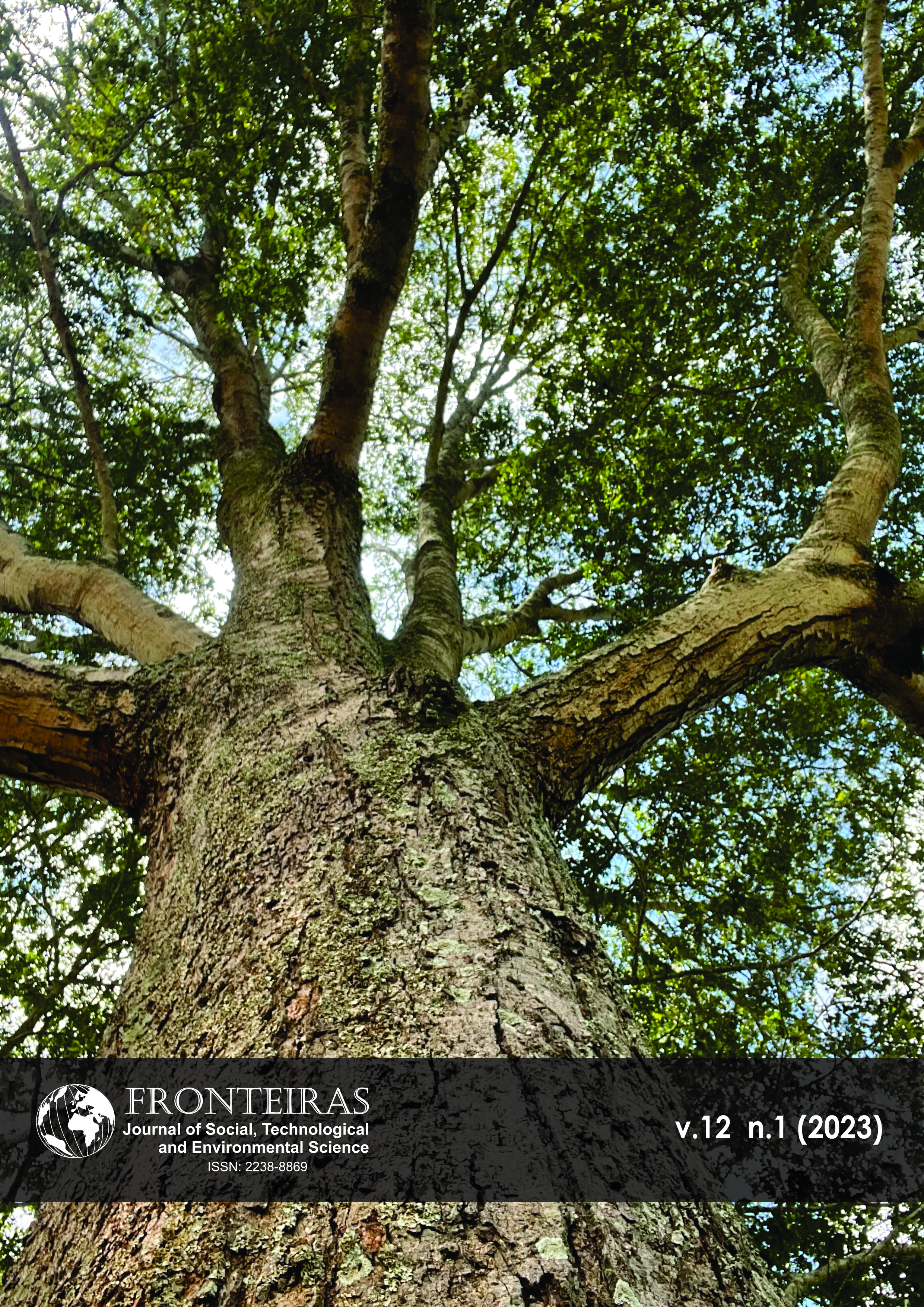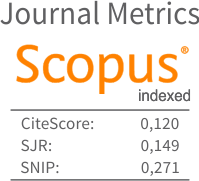Evidence of the Impact f Socioecnomic Vulnerability in Increase of Covid-19 Pandemic in the City of Manaus
DOI:
https://doi.org/10.21664/2238-8869.2023v12i1.p123-133Keywords:
Manaus, Covid-19, social inequality, socioeconomic indicatorsAbstract
This article aims to analyze the relationship between the geographical disposition of cases of COVID-19 occurrences in the city of Manaus and socio-environmental indicators. The data used in the research were: (i) reports made available on the website of the Secretary of Health of the Municipality of Manaus, which stores data regarding the number of confirmed cases of COVID-19 and people who died, in the period from March 1st from 2020 to December 9, 2021, including information on gender, age group and race of individuals (illness and death cases); (ii) the platform of the State Secretariat for Economic Development, Science, Technology and Innovation of Amazonas, which provides data on income and population numbers of each neighborhood in Manaus; and (iii) from the portal of the Brazilian Institute of Geography and Statistics, on subnormal clusters, it was possible to identify information on the internal spatial redistribution in the neighborhoods and the availability of access to public health units and data on socioeconomic indicators. The collected data were spatialized, using the ArcGis software, and statistical analyzes were performed. This study allowed us to observe that in the capital of Amazonas there is a spatial segregation of the population influenced by income and population density and that these socioeconomic variables led to greater illness by COVID-19 in the population living in the most vulnerable areas. As a result, the population residing in these locations suffered from higher rates of death and number of people infected, which culminated in the worsening of the disease. In this sense, public investment in urban infrastructure is essential to promote human health, especially in the face of a pandemic scenario. The historical records of the Municipal Health Department (SEMSA) on the outbreak of COVID-19 in the city of Manaus should serve as a warning so that future actions by the State are favorable to the needs of the population.
References
Barreto, M.L. Desigualdades em Saúde: uma perspectiva global. Cien Saude Colet, 2017.
Calmon, T.V.L. As condições objetivas para o enfrentamento ao COVID-19: abismo social brasileiro, o racismo, e as perspectivas de desenvolvimento social como determinantes. NAU Social .2020
Estado do Amazonas / Secretaria de Segurança Pública do Estado do Amazonas – SSP/AM. Diagnóstico da criminalidade 2012. Comissão de Análise da Criminalidade; Nascimento, A.G.O. [Org.] - Manaus: Secretaria de Estado de Segurança Pública, 2013.
Dias, E.M. A ilusão do Fausto. Valer: Manaus, 1999.
Fernandes, L. A. C., Silva, C.A. F., Dameda, C., Bicalho, P. P. G. Covid-19 em favelas cariocas: no limiar entre os direitos humanos e as desigualdades sociais. Metaxy, Rio de janeiro, 2020.
Giddens, A. As consequências da Modernidade. São Paulo: UNESP, 1991.
Grostein, M.D. (2001) Metrópole e Expansão Urbana: a Persistência de Processos "Insustentáveis". São Paulo Perspectiva. [online]. Vol.15, n.1, pp. 13-19. ISSN 0102-8839.
IBGE, Instituto Brasileiro de Geografia e Estatística. Aglomerados Subnormais 2019: Classificação preliminar e informações de saúde para o enfrentamento à COVID-19. Brasília, DF: IBGE; 2020 [acesso 26 set. 2022]. Disponível em https://dadosgeociencias.ibge.gov.br/portal/apps/webappviewer/index.html?id=67c70e701c624c63a6f1754a8b8bce4a
IBGE, Instituto Brasileiro de Geografia e Estatística. Área Territorial Brasileira 2020, DF: IBGE; 2021 [acesso 26 set. 2022]. Disponível em https://www.ibge.gov.br/cidades-e-estados/am/manaus.html
IBGE, Instituto Brasileiro de Geografia e Estatística. Sinopse do censo demográfico 2010, Brasília, DF: IBGE; 2010 [acesso 4 out. 2022]. Disponível em https://biblioteca.ibge.gov.br/index.php/bibliotecacatalogo?view=detalhes&id=249230
Ministério da Saúde. Painel Coronavírus [Internet]. Brasília, DF: MS; 2022 [acesso 4 ou. 2022]. Disponível em: https://covid.saude.gov.br/
Nascimento, E.; Matias, L. F. Expansão urbana e desigualdade socioespacial: uma análise da cidade de Ponta Grossa (PR). RA´E GA – O Espaço Geográfico em Análise, nº 23, pp. 65-97, 2011.
Nohama, N., Silva, J.S., Simão-Silva, D.P. Desafios e conflitos bioéticos da covid-19: contexto da saúde global. Rev. bioét. 2020.
Oliveira M.J.I., Santo E.E. A relação entre os determinantes sociais da saúde e a questão social. Cad Saúde Desenvolv, 2013.
Oliveira, J.A. Manaus de 1920-1967: a cidade doce e dura em excesso. Manaus, Valer/UFAM, 2003.
Oliveira, M.S.M.; Siqueira, A.R.; Teixeira, M.A.M. CONHECENDO O SARS-COV-2 E A COVID-19. Diplomacia da saúde e COVID 19: reflexões a meio caminho. Bus, P.M., Fonseca, L.E. Fundação Osvaldo Cruz. 2020. p. 69-82. Disponível em
www.arca.fiocruz.br/bitstream/handle/icict/49920/cap5_conhecendo_sars-Cov-2_covid_19.pdf;jsessionid=D96684FFF5433822990D9C858B7E13E5?sequence=2
Pinheiro, M.L.U. A cidade sobre os ombros: trabalho e conflito no porto de Manaus (1899-1925). Manaus: Ed., 1999.
Preteceille, E., Valladares, L. Favelas: unidade ou diversidade da favela carioca. In: Ribeiro, L. C. (Org.). O Futuro das Metrópoles: desigualdades e governabilidade. Rio de Janeiro: REVAN/FASE, 2000.
Schwade, T.M.M., Schwade, M. C. D.L., Schwade, L. A., A chegada do SARS-COV-2 no Amazonas, Hygeia – Revista Brasileira de Geografia Médica e da Saúde, 2020.
Secretaria Municipal de Saúde (Manaus). Transparência Covid-19: Monitoramento dos casos de Covid-19[Internet]. Manaus, AM: Secretaria Municipal de Saúde; 2022 [acesso 28 set. 2022]. Disponível em: https://covid19.manaus.am.gov.br/casos-de-covid-19-manaus/
SEDECTI, Secretaria de Estado de Desenvolvimento Econômico, Ciência, Tecnologia e Inovação -Indicadores e Mapas. Manaus, AM:Sedecti, 2022 [acesso 28 set. 2022]. Disponível em: https://www.sedecti.am.gov.br/indicadores-mapa/
SEMED, Secretaria Municipal de Educação de Manaus. Anexo III - Bairros por divisão distrital zonal, 2019. acesso 28 set. 2022]. Disponível em https://semed.manaus.am.gov.br/wp-content/uploads/2019/04/Anexo-III.pdf
World Health Organization. Situation by Region, country, territory &área [Internet]; 2022 [acesso 4 out. 2022]. Disponível em: https://covid19.who.int/table
Downloads
Published
How to Cite
Issue
Section
License
This journal offers immediate free access to its content, following the principle that providing free scientific knowledge to the public, we provides greater global democratization of knowledge.
As of the publication in the journal the authors have copyright and publication rights of their articles without restrictions.
The Revista Fronteiras: Journal of Social, Technological and Environmental Science follows the legal precepts of the Creative Commons - Attribution-NonCommercial-ShareAlike 4.0 International. 


